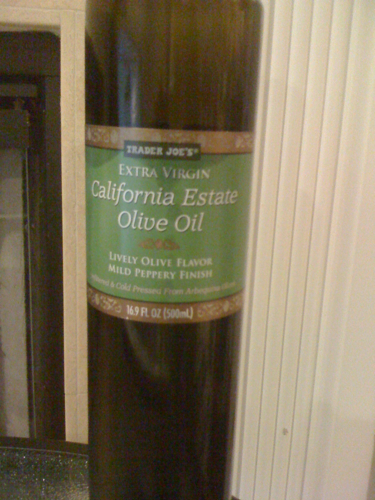23
Jun / 11
From the CFI Vault: Olive Oil Primer
Categories: Workout of the Day
posted by: Marcus

Olive oil — it’s one of the first choices people rattle off when asked to name a “healthy” fat. In fact, going back to Ruth’s food matrix post, you can see it was first in her list as well. So assuming you believe it as well, do you know how to spot a good olive oil when you see one?
You may think that when you order olive oil at a restaurant, that’s what you’re getting. I know I sure used to! But things are tricky in the Food Inc. world we now live in. Many restaurants use a food supplier such as Sysco for their staple items. Quite commonly, that “olive oil” you are brought is actually a vegetable oil blend with a minimal amount of actual olive oil. I found this out for myself when my cafeteria at work didn’t have their cruet of oil available. One of the workers brought out the container which I then saw to be a blend with only 25% olive oil!
We commonly link to Mark Sisson’s website Mark’s Daily Apple, and he had a great feature on olive oils that I found helpful when shopping. Here’s one of the key points:
When choosing an oil, treat it a bit like wine and engage your senses. Smell it – it should smell like olives, very clean and almost like grass and apples. Don’t rely too much on sight – the color of an oil is easily manipulated. Instead, go with the one that really matters: taste. Take a half teaspoon or so into your mouth and swirl it around (again, like wine). First and foremost, it should taste like olives, but there are other flavors in the best oils. Grassiness, apples, even fennel are pretty common in really great olive oil. If it’s metallic-tasting, it’s probably rancid. If it’s light, delicious, and barely coats your mouth (without feeling greasy), it’s probably great stuff. And then my favorite part, the finish. The best oils from the first harvest with the highest antioxidant content will leave a spicy finish on your throat, like mild peppers.
Also, don’t forget to make sure your oil is stored properly:
Store your oil in a cool, dark place. Heat and light are now your biggest enemies (be sure to buy an oil in a dark bottle).
Now I have tried to find a locally grown olive oil at the farmer’s markets but have not been successful so far. They have all been imported varieties, which as you may have read in the linked article, damages the extra virgin olive oil. Thankfully, Trader Joe’s has a great option that Mark mentioned (pictured above). When I first tried it I compared it to the description above. Locally grown and in a dark bottle? Yup. Was the oil light in texture with grassy notes and a peppery finish? Check. I was sold and I’ve been using it ever since!
See also: What’s the deal with canola oil?
WOD 06.23.11
Gymnastics WOD


 310.465.6565
310.465.6565 


















2 Responses to “From the CFI Vault: Olive Oil Primer”
Steve
June 25, 2011 at 8:19 PM
WeOlive in Long Beach sells locally grown olive oil (from Central Coast areas) in bulk. You buy an empty bottle and fill it up with your favorite. They have tastings, and you can bring your empty bottle back for a less expensive refill. Some pretty amazing stuff!
ruth
June 25, 2011 at 9:11 PM
Wow, thanks Steve! We’ll have to take a field trip and check it out!!